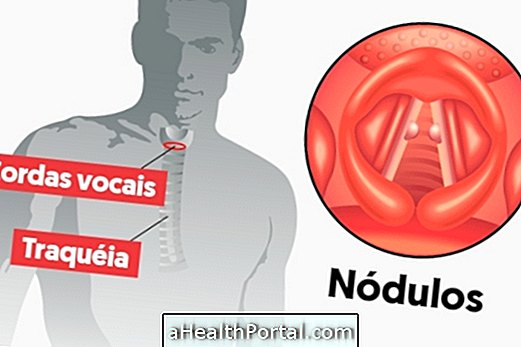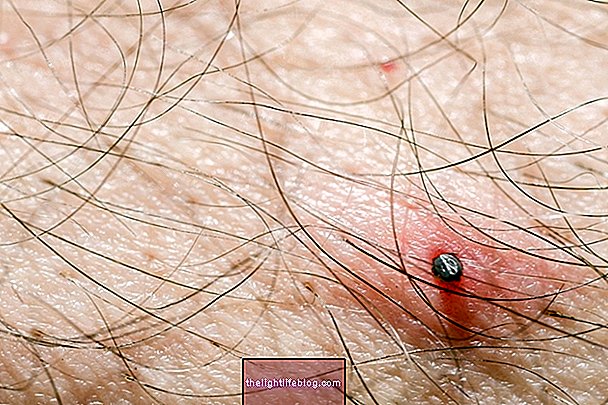The lump or callus on the vocal cords is an injury that can be caused by the excessive use of the voice more frequent in teachers, speakers and singers, especially in women due to the anatomy of the female larynx.
This alteration usually occurs after months or years of poor voice use and can be diagnosed by the otorhinolaryngologist through observation of the symptoms presented by the individual and confirmed through imaging tests such as upper digestive endoscopy, where it is possible to observe the appearance of the larynx and vocal chords.

What causes callus callus
The symptoms of callus on the vocal cords are hoarseness or voicelessness, difficulty speaking, frequent dry coughing, throat irritation and loss of voice volume. All this can arise in case of:
- People who need to talk a lot, like teachers, singers, actors, speakers, salespeople or telephone operators, for example;
- Speaking or singing very loud frequently;
- Speak in a more serious voice than usual;
- Speak too fast;
- Speak very low, forcing the throat further, projecting the voice less.
If the above symptoms last for more than 15 days, medical advice is recommended.
The people most likely to develop callus on the vocal cords are those with professions that need to use their voice a lot, but usually women are most affected. There seems to be no relationship between smoking and having callus, but in any case it is recommended not to smoke because the passage of smoke in the throat causes irritation, throat clearing and increases the risk of cancer. Children may also develop callus on the vocal cords, especially boys, probably by shouting habits during group games, such as football.

How to avoid callus on the vocal cords
To prevent the formation of another callus, it is important to know how to use the voice correctly, using techniques that can be indicated by the otorhinolaryngologist and speech therapist, such as:
- Take small sips of water: keeping your throat always properly hydrated, whenever you are teaching or in a place where you can not use a microphone to amplify the height of the voice;
- Eat 1 apple before using your voice much like before giving a lecture or lecture because it cleanses the throat and vocal cords;
- Do not shout, using other ways to get attention;
- Do not force your voice to speak louder, but master the art of putting your voice well, with vocal exercises;
- Do not try to change the tone of voice, to more serious or acute, without direction of the audiologist;
- Hold your breath through your nose, do not breathe through your mouth, not to dry your throat;
- Avoid eating chocolate before you have to use your voice too much because it makes the saliva thicker and harms the voice;
- Prefer foods at room temperature because very hot or very cold foods also damage the voice.
The treatment can be done with the rest of the voice and the practice of exercises for vocal folds to warm up and deactivate the voice taught by the audiologist. In severe cases when the callus becomes large or very rigid, surgery may be required for removal, but following these tips may improve vocal health and prevent new callus formation on the vocal cords.







-o-que--sintomas-e-tratamento.jpg)


















